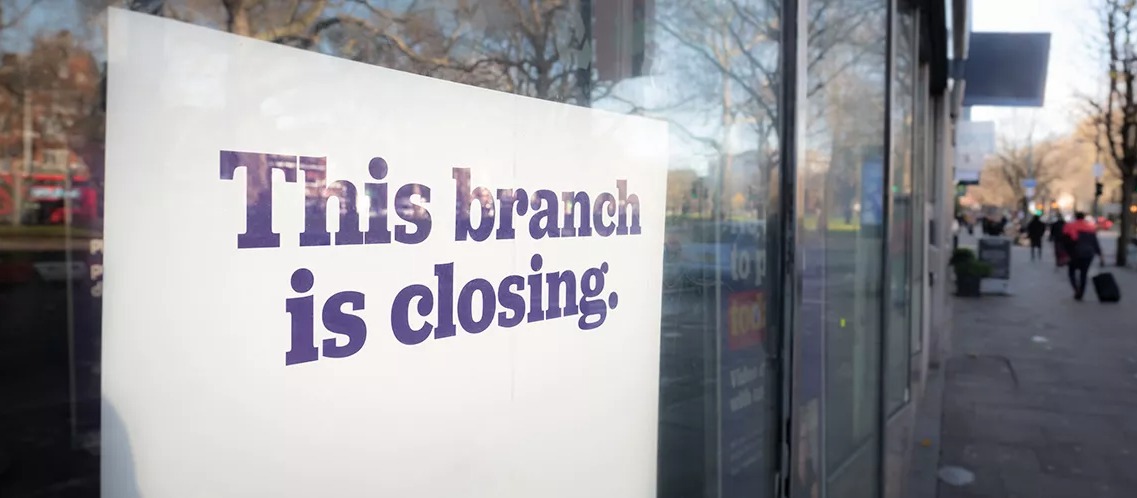The financial industry has undergone several changes in recent years: the emergence of new technologies, the entry of fintechs, and the transition from a physical branch- based business model to an increasing reliance on digital services. These trends can foster competition and the democratization of financial services. In our recent working paper, we investigate how the presence of physical branches moderates the diffusion of payment technologies. Moreover, we show how the availability and adoption of digital payment technologies can pave the way for the expansion of digital institutions and improve competition in the banking industry.
A key function of bank branches is the provision of payment services, in particular by storing and distributing currency. The attractiveness of cash as a means of payment increases in locations in the vicinity of branches due to lower costs of making withdrawals and deposits. Since payment methods display adoption complementarities, coordination failures can arise and hinder the penetration of alternative technologies. Moreover, learning costs and lack of trust and information can also hinder the adoption of new methods. Therefore, physical branches can induce a locality to use more cash even when new, welfare-enhancing technologies become available. Such reliance on cash can reduce the competitiveness of digital institutions that do not have the physical infrastructure necessary to support cash deposits and withdrawals.
In general, the suspension of branch services results from banks’ operating decisions and reflects unobserved factors that also determine technology adoption. For instance, banks might close branches where the population is more likely to use digital services. To overcome this methodological challenge, we explore the consequences of temporary branch closures, which disrupt in-person services and increase cash handling costs. We leverage a shock caused by criminal activity in Brazil that leaves a branch inoperable for a couple of months. Organized crime groups use explosives to access all the cash stored in the branch’s vault and automated teller machines (ATMs). The attacks, which usually occur in small and medium-sized cities, take place in the dead of night when the streets are empty and there is less police presence; immediately afterward, the groups flee the region. Often this activity results in the complete destruction of the branch.
This type of bank heist requires skilled personnel, meticulous training and planning, and an expensive apparatus. Therefore, the attacks are carried out by non-local organized groups and are not associated with other criminal activities or local unobserved variables that could influence financial technology decisions. Using weekly and monthly data, we compare trends in banks’ cash holdings and the use of digital payment methods in cities that experienced such criminal events and in cities that did not.
We show that the shock has a significant impact on the branches’ cash inventory. Compared to branches in control municipalities, treated branches have virtually no cash right after an attack (-97%). These attacks do not significantly affect the stock of deposits of the treated branches, at least in the short run, indicating that their main consequence is the depletion of the amount of cash stored in the branches.
We then study the effects on Pix, an instant payment technology that was launched in November 2020 by the Central Bank of Brazil. Pix is free of charge to individuals, easy to use (alias-based), available 24/7, and only requires an account in a bank or payment institution and a connection to the internet. Before Pix, alternative options were costlier, not instant, or less user-friendly. Between its launch and December 2021, 96 million individuals (54 percent of the adult population) made at least one transfer using Pix. In January 2022, users made more than 1.3 billion transactions. Despite its success, around 71 million adults (40 percent of the adult population) still do not use any electronic system to make transfers.
After the bank robberies, we observe an increase in the number of Pix users and the number and value Pix transactions in the affected municipalities , when compared to other municipalities not exposed to the robberies (Figure 2). Inspecting the dynamics of the effects, we note that Pix usage grows for roughly two months after the event and remains flat (at a higher value) thereafter, showing that temporary branch closures have persistent effects. Pix substitutes not just cash but also traditional electronic payment methods. Before Pix, people used debit cards and the available electronic transfer method (known as TED) to cope with the cash provision shock. However, after the introduction of Pix, they increased the use of Pix and debit cards but the number of TED transfers did not grow.
Figure 1: Number of Pix Transactions before and after Bank Robberies
Image

We document spillovers for institutions that operated in the treated municipalities but did not have a branch that was attacked. We show that the number of Pix transactions and users of non-robbed private branch-based banks and digital institutions increases after a bank robbery in the municipality. The increase in the number of Pix users is especially strong for non-branch-based institutions. These institutions do not have a network of physical branches and ATMs. Customers who need to withdraw or deposit cash have to use the network of other institutions at a cost. As a result, a greater local reliance on cash decreases the competitiveness of digital institutions.
In the next version of the paper, which will be available soon, we also show that the number of individuals with outstanding loans from digital institutions increases after the robberies and that this growth is substantially larger after the Pix introduction (Figure 3). Our results suggest that, once the local cash reliance is reduced and there is an attractive alternative for cash, digital institutions expand as both payment and credit providers, enhancing competition in the local financial market.
Figure 2: Number of Credit Households Clients After the Robberies
Image



